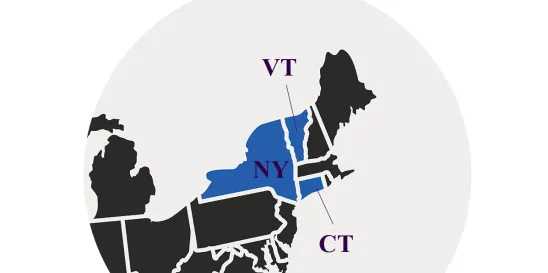When leveraged buyouts (“LBOs”) fail, the selling shareholders are litigation targets. A common suit is a claim by a bankruptcy trustee asserting constructive fraudulent transfer claims seeking to claw-back payments to the selling shareholders from the loan proceeds that financed the LBO. For nearly two decades, courts across the country (including the Supreme Court) have struggled with complex issues interpreting a defense under Section 546(e) of the Bankruptcy Code, which immunizes shareholders from a constructive fraudulent transfer suit when the disputed transfer is either (a) a “settlement payment” made by or to a “financial institution” or (b) made by or to a “financial institution” in connection with a “securities contract.” Spotting a “financial institution” is not as simple as it seems. As explained below, in In re Nine West LBO Securities Litigation, Case No. 20-3257 (2nd Cir. Nov. 27 2023) (“Nine West”), the Second Circuit shielded over $1 billion in payouts to shareholders from retailer Nine West’s failed LBO on the basis that Nine West was a “financial institution.”
Background
A private equity sponsor acquired Nine West in 2014 through an LBO. A few years later, Nine West filed bankruptcy. The trustee of a litigation trust challenged three transfers as constructive fraudulent transfers. Nine West transferred:
- Approximately $1.1 billion to Wells Fargo, which was subsequently transferred to Nine West’s shareholders in exchange for their shares (the “DTC Transfers”);
- $4 million to Wells Fargo, which was subsequently transferred to Nine West shareholders in exchange for their shares (the “Certificate Transfers”); and
- $78 million to a payroll processor, which was subsequently transferred to former directors, officers, and employee shareholders (the “Payroll Transfers”).
The defendant transferees argued that the payments were protected under Section 546(e) of the Bankruptcy Code because (i) Nine West was a “financial institution” under Section 101(22)(A) of the Bankruptcy Code and (ii) the transfers were a “settlement payment” or otherwise made “in connection with a securities contract.”
At the trial court level, the District Court for the Southern District of New York sided with the defendant transferees, concluding that all three transfers were indeed protected. As described below, the Second Circuit on appeal agreed with the district court that Nine West was a “financial institution” for purposes of the Certificate and Payroll Transfers, and thus those transfers were safe harbored under Section 546(e). The Second Circuit, however, took a different view regarding the Payroll Transfers, holding that Nine West was not a “financial institution” for those transfers and thus the fraudulent transfer action could go forward.
Nine West Is a “Financial Institution” for Two of Three Transfers
Bankruptcy Code Section 101(22)(A) defines a “financial institution” to include a “bank’s customer” when the bank “is acting as agent” for its customer. Here, Nine West was Wells Fargo’s customer in connection with the DTC and Certificate Transfers, and Wells Fargo was acting as Nine West’s agent in making those transfers.
The Second Circuit held that the customer-agent relationship must be established for each challenged transfer (i.e. it adopted the “transfer-by-transfer” approach). In doing so, it disfavored the “contract-by-contract” approach, under which, if the customer-agent relationship is established for one transfer under the contract, the customer qualifies as a “financial institution” for all transfers in connection with the contract. The Second Circuit found that the contract-by-contract approach would undermine avoidance powers and lead to the absurd result of insulating every transfer in an LBO so long as the bank served as agent for at least one transfer. The circuit court found its statutory interpretation to be further supported by the purpose of Section 546(e), which is to protect transactions rather than firms.
Applying the transfer-by-transfer approach, the Second Circuit concluded that the DTC and Certificate Transfers were protected, but the Payroll Transfers were not. For the first two transactions, Wells Fargo was acting as an agent for its customer (Nine West) because it made the payments to, and received information from, shareholders on behalf of Nine West under a paying agent agreement.
By comparison, for the Payroll Transfers, Nine West’s payroll processor made the payments and not Wells Fargo. To the extent Wells Fargo played any role with respect to the Payroll Transfers, it consisted of “cancelling” the stock certificates owned by Nine West’s former directors, officers, and employee shareholders, i.e. stamping the word “canceled” on the certificates. However, because the certificates were already automatically cancelled under the terms of the merger agreement by that point, Wells Fargo’s role was purely ministerial and insufficient to create an agency relationship with respect to the Payroll Transfers.
In other words, certain actions taken by a bank (here, Wells Fargo) at the instruction of its client (here, Nine West) may establish agency as a matter of law and qualify the customer as a “financial institution” under the Bankruptcy Code. Here, those agency actions include: (i) receiving funds from the lenders financing the LBO; (ii) collecting share certificates or other information from the selling shareholders; and (iii) disbursing payments and making distributions to the selling shareholders.
Conversely, Nine West’s payroll processor making distributions to selling shareholders or Wells Fargo stamping the word “canceled” on the share certificates when cancellation had already become effective under the merger agreement were insufficient to establish an agency relationship.
“Securities Contract” Is Broadly Defined
Having determined that Nine West was a “financial institution” (or more specifically, a customer of financial institution) for the DTC and Certificate Transfers, the Second Circuit next turned to whether the transfers themselves were qualifying transfers. The Second Circuit agreed with the district court that Section 546(e) “covers not only contracts for the repurchase of securities but also any other ‘similar’ contract or agreement,” and that a “securities contract” is defined with “extraordinary breadth”. It therefore rejected the trustee’s argument the transactions did not qualify because they also involved cancellation of shares. In the alternative, the Second Circuit further held that the transfers would constitute “settlement payments” because they included a transfer of cash made to complete a securities transaction.
Key Takeaways
Structuring is crucial on the front-end of an LBO or dividend recap to minimize fraudulent transfer risk in a downside scenario. When things go awry and lawsuits are filed, spotting a “financial institution” is not as simple as it seems considering that Nine West’s status as a “financial institution” immunized $1 billion dollars of potential risk.
One may question whether the outcome of Nine West regarding the DTC and Certificate Transfers is consistent with existing Supreme Court precedent, specifically Merit Mgmt. Grp., LP v. FTI Consulting, Inc., 583 U.S. 366 (2018) (“Merit”). In Merit, the Supreme Court decided not to protect transfers made by Citizens Bank of Pennsylvania acting as escrow agent, holding that Section 546(e) does “not protect transfers in which financial institutions served as mere conduits.” A critical distinction between the two cases is that the parties in Merit did not argue that Merit(the transferor) was a “financial institution” because it was a customer of Citizens Bank acting as its agent. [1] While Nine West is not the first case to deviate from Merit on similar facts,[2] it remains to be seen whether the Supreme Court would find that the Section 546(e) safe harbor applies on similar facts if the bank customer/agency argument were presented to it. The opportunity for the Supreme Court to react may come sooner rather than later. Specifically, the former shareholders of Nine West plan to seek review of Nine West as to the Payroll Transfers (which were not safe harbored) and have filed a motion to stay further proceedings pending their petition for certiorari before the Supreme Court.
_______________
[1] Merit at * 377 (“The parties here do not contend that either the debtor or petitioner in this case qualified as a ‘financial institution’ by virtue of its status as a ‘customer’ under § 101(22)(A) … We therefore do not address what impact, if any, § 101(22)(A) would have in the application of the § 546(e) safe harbor”).
[2] See In re Trib. Co. Fraudulent Conv. Litig., 946 F.3d 66 (2d Cir. 2019) (Transfers made by Computershare Trust Company in connection with Tribune’s LBO were safe harbored because Tribune was a customer of Computershare, a financial institution, and Computershare acted as Tribune’s agent with respect to those transfers).
Jorge Gonzalez also contributed to this article.







 />i
/>i

